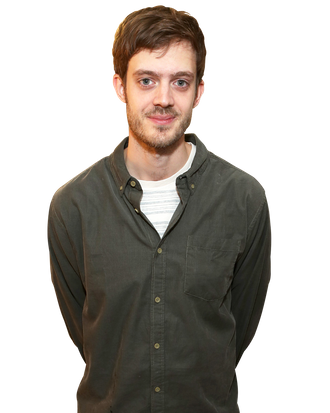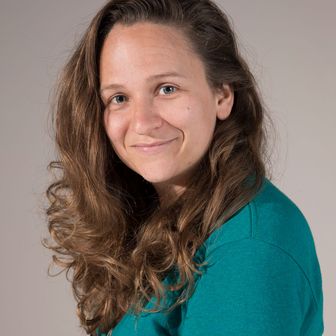
Thoroughbreds, in theaters this weekend, is a psychological thriller about a pair of disaffected teenagers, Amanda (Olivia Cooke) and Lily (Anya Taylor-Joy), who come back together after years of estrangement, and end up of plotting the murder of Lily’s stepdad. About four years ago, playwright Cory Finley started writing Thoroughbreds as a stage production. The entire thing took place on a living-room couch (a tableau you’ll recognize from the film’s promotional posters), and revolved around two characters talking, with occasional appearances made by role players. But then Finley started thinking of Thoroughbreds in terms of “thriller logistics,” and the stage became too static to develop the narrative intrigue he’d dreamed up.
“I started seeing it in close-ups and wide shots and things like that, even for the more stationary scenes,” Finley tells Vulture. “So it felt like the play itself was crying out to be transformed into a movie.”
Originally titled Thoroughbred (singular) when it debuted to acclaim at Sundance last year, the movie is dark and funny and strange and unsettling — somehow both a muted and immersive examination of the challenges of friendship in our raw teenage years, and the necessity of companionship even when you’re sort of a sociopath. Vulture caught up with Finley before the film’s release to talk about violence against women onscreen, why men are so afraid of female characters alone together — and why his movie is actually one of the year’s most unexpected romantic comedies.
I wanted to ask you about the violence in this movie: The story really revolves around a few gory acts that are only referenced with suggestive cutaways or audio queues. How did you decide what you would show onscreen versus what you would leave for the imagination to fill in?
I often think the monster under the bed that you can sort of hear but never quite see is always the scarier one. This movie is so about psychology and emotions and what drives people to do certain things that it felt like the right choice, whenever there was an act of violence, that the camera focused on a character who was affected by the violence rather than on the act itself. So for pretty much every gruesome moment in the movie, we linger on the character who is going to deal with the effects of the violence — or who is sort of processing what the violence means — rather than on the viscera of it.
I’m heartened by how deliberately you considered the power of point of view, and images of women processing violence. We’re so often on the receiving end of violence, while men are afforded the luxury of exercising their feelings in the aftermath of it, and powerfully acting out to cope.
Yeah, there’s such a dark tradition in film of violence towards women as motivating factor in a man’s arc. I don’t think I’ve written any of those plays, but I had written a lot of plays with women as sort of secondary characters. You know, man’s plays where women were there to serve their arc. I think one of my personal challenges to myself in writing this was to write two lead female characters that were not at all defined by a relationship to a man. There were no boyfriends. The movie was very much on their shoulders.
Our film critic Emily Yoshida did this great look back at Ingmar Bergman’s Persona last year, and a theme she really dove into was the persistent anxiety male filmmakers have about women being alone with each other. Do you think that’s a fear you’ve also internalized?
I’m sure I have, yeah. As a male writer and director, a gender combination I can never be a part of is one between two women without a man present. So there’s a curiosity about what those conversations are like, and talking to my girlfriend or my sister or any of the women in my life about their female friendships — particularly in high school and early in life — there always seems to be such a complication to those friendships. There’s such an intensity.
I’ll corroborate that, yes.
And I was always curious about what those were like. I think my own male friendships in high school were certainly complicated, but had a bluntness to them [laughs]. And what you were saying obviously makes my brain go to the Bechdel test, and this idea that so few of our films even show women talking together without the mediating presence of a male subject in their conversations. But that’s an interesting notion, that that phenomenon comes from a fear of women together, or fear of women conversing without a man.
A thing I appreciated a lot about this movie was how asexual it was. Movies about intricate relationships between women often contain some cocktail of the characters coveting one another, competing with one another, or even possessing this drive to meld into a single form. In Thoroughbreds, though, your characters maintain a space between them that veers away from the aggressive female codependence in movies like Queen of the Earth or Jennifer’s Body or Single White Female. With Amanda and Lily being teens, that sets the table for even more fluidity or physical exploration in their relationship. Was the absence of that kind of intimacy deliberate on your part?
I thought about it a little bit. It was interesting to me, taking teenage girls — who I think are some of the most over-sexualized beings in our culture — and making a movie that is about everything in their lives except sexuality. But of course some sort of subconscious sexuality is present in any movie, and without overstating the point, there’s a little bit of a sadomasochist push-pull to the way Amanda and Lily build a relationship together.
Classic teen girl, honestly.
[Laughs.] Teen boy, too, in its own way. But that’s a whole other conversation! But I like this idea that Amanda has such distance from everyone else in her life, and her sort of superpower is lack of emotional vulnerability. You can throw anything at her, and she’s almost looking for someone to be really, really frank with her, but no one will, and Lily is almost looking for someone to emotionally abuse in a certain way. The first way they connect in this movie is through this emotional abuse that they both benefit from, and then the relationship turns in all sorts of other directions from there.
I read also that Anya and Olivia had a role in shaping the backstories of their characters. Can you remember any specific things they surprised you with?
In the rehearsal process, we wanted to keep a lot of the actual lines and scenes and moments fresh, and leave something to be discovered on the day of shooting. But we had such a fun conversation about, “When did these two characters first meet. What did they think of each other?” I think that let us all arrive on set with a feeling that, in a weird way, those two characters had known one another for a while. I don’t know if I remember a ton of specific nuggets of their pasts, but I certainly remember the tenor of those conversations.
Olivia told us last year at Sundance that she really insisted on Amanda’s Birkenstocks, and that there was a real arrogance to a person who would meet you wearing open shoes with your “toes on show.”
Yes! They were both very active in crafting their own wardrobes for sure. I know Anya was really insistent on this wasp necklace. She liked this idea of a very beautiful object that had this kind of stinger on it, for obvious reasons. And Oliva wanted the open-toed shoes and thought she was a character who would continue to wear her jacket indoors, often, which is sort of like this strange power move. So she wears a Barbour jacket, which is an elegant, Old-English hunting jacket, but she just wears it two hours into a tutoring session. She’s just got her jacket on and it’s sort of a suit of armor, and I love the way it plays onscreen.
When the movie first debuted at Sundance, you talked a bit about the inevitable politicization of art, regardless of the artist’s intentions. I was wondering how you consider the politics of this movie now that the context has changed so much since it first premiered. Suddenly it’s coming out as this “teen girls versus the patriarchy” psychological thriller in 2018, debuting one week after the #MeToo-inflected Academy Awards.
When I was editing the movie and heading into Sundance, the cultural moment centered around the Nasty Woman thing, and the shaming of Hillary Clinton as a dangerous, powerful woman. I was certainly thinking about how the movie might be a reflection of that, and hoping it came off in the right way. And since then the #MeToo moment has arisen, along with conversations about toxic masculinity. Again, I hope this movie fits into those conversations in a productive way. Because films are so slow, a movie becomes this time capsule that you’re sending off into the future — hoping that it resonates in the right way — in whatever mysterious culture it will find itself in. It’s been interesting having that journey with this one, and I’m sure in two weeks when we officially open, the world will feel like a different place than it is today. I just hope the movie feels relevant.
When you first talked about the politics of art, you talked about Thoroughbreds as a critique of capitalism and socioeconomics. Lily is treated with real empathy in your movie, but she really embodies this sociopathy of privilege that we see embodied by some of our nation’s leaders.
I like that the same two characters are both the movie’s heroes and villains. Even though it feels like a thriller, in a way, the core structure of the movie is a romantic comedy. For me, that’s the one genre that really doesn’t have a hero and a villain. It has these two characters that are both one another’s obstacle and one another’s goal. Certainly they’re teaming up toward a very specific end, but really the whole murder plot of the movie is an excuse to deepen their friendship.
And that’s the long way of saying I was interested in these privileged, sociopathic characters that were both enabled by their own privilege, but also trapped within it. And by spending time with them and thinking about the way that they were shaped by this worldview — and sometimes having a satirical distance from them, sometimes feeling right there with them — that it would be an interesting way to tackle these personality types that are all over our political landscape.
This interview has been edited and condensed.


